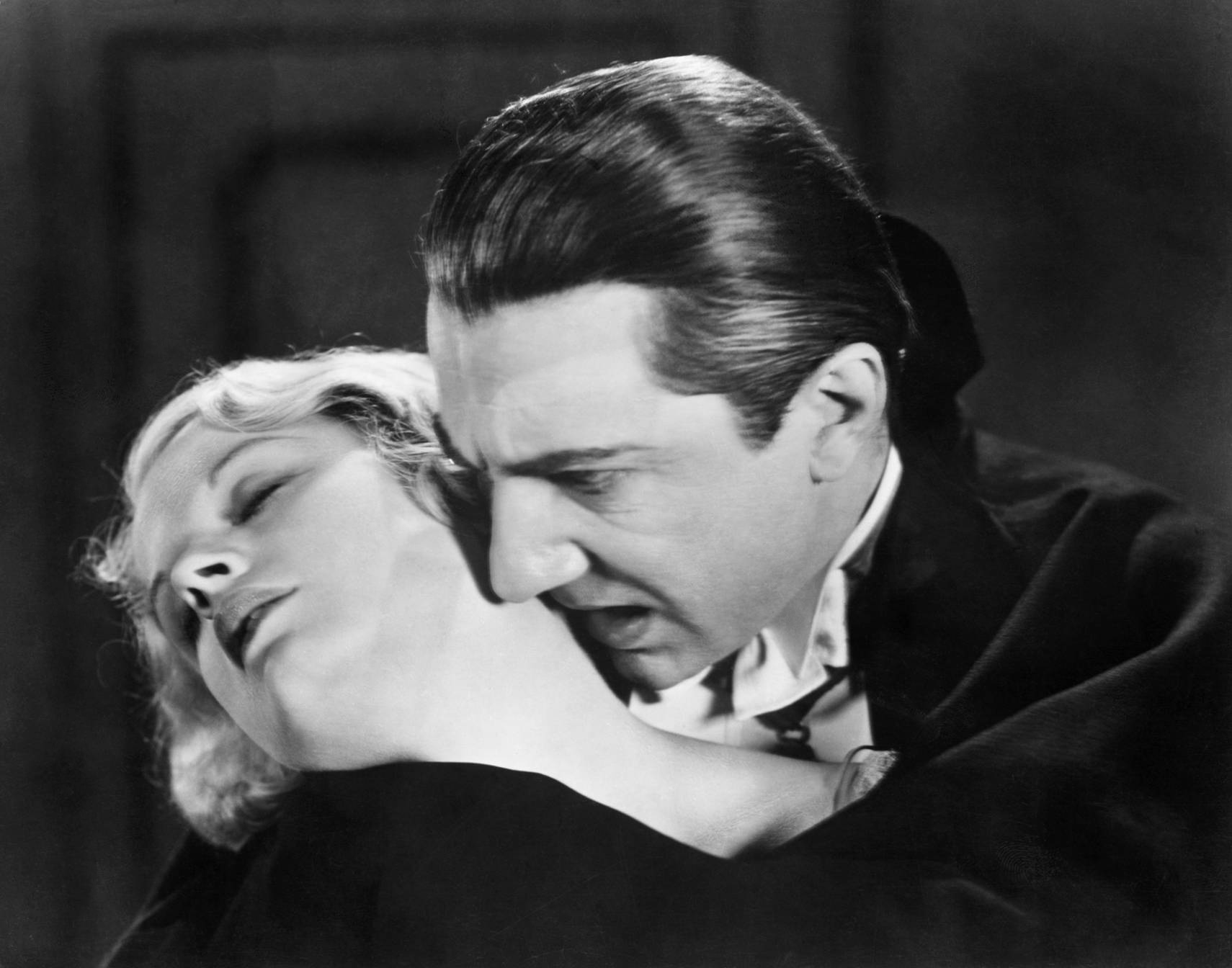Review by Trylon volunteer Michael Popham.
Count Dracula, Bram Stoker’s human vampire, who has chilled the spines of book readers and playgoers, is now to be seen at the Roxy in a talking film directed by Tod Browning, who delights in such bloodcurdling stories. It is a production that evidently had the desired effect upon many in the audience yesterday afternoon, for there was a general outburst of applause when Dr. Van Helsing produced a little cross that caused the dreaded Dracula to fling his cloak over his head and make himself scarce. –Mourdant Hall, New York Times, February 13, 1931
Looking back, it’s difficult to imagine what audiences in 1931 made of Tod Browning’s Dracula. While the snippet of Times review above gives us a glimpse, approaching the movie with fresh eyes is a challenge. Even if you’ve never seen Dracula, you feel like you’ve seen it. It’s been ripped off, built upon, remade, reimagined, parodied, sliced, diced and pureed for 82 years.
But there’s no question that this is still the definitive version of Bram Stoker’s 1897 novel. On its initial release it hit audiences like a piledriver, offering up a tale as ghastly as any that had been shown on a movie screen.
The wealthy Count Dracula (Bela Lugosi) has arrived in England, charming the socks off his new neighbors, the Seward family. The Sewards don’t know – but we do – that the Count‘s urbane manner is only a façade. He is in reality a vampire, a loathsome creature that sleeps in dirt, lives in darkness, and drinks the blood of the living. Those unfortunates whom he does not kill become his slaves, and he has decided young Mina Seward (Helen Chandler) will be his next victim. Mina’s only hope of salvation is the eccentric Dr. Abraham Van Helsing (Edward Van Sloan), a student of the occult. But Van Helsing discovers that it’s difficult to fight a vampire when everyone around you refuses to believe in them.
Browning’s directorial style isn’t particularly dynamic, and many of the vampire tropes he introduced to the movies might seem shopworn today. But there are moments in this film that are still thrilling: the scenes in the Transylvanian village, where the superstitious folk beg Jonathan Harker (David Manners) not to journey to the castle; the ruins of Dracula’s great hall, looking frozen and otherworldly in the moonlight; Bela Lugosi’s peculiar mannerisms and his creepy over-pronunciation, which seems to mock the very language used by his victims.
We like to think of Dracula as tame stuff by today’s standards, and we regard the moviegoers of 1931 as innocent, almost child-like. They screamed at scenes we’d yawn at. But perhaps we’re not as sophisticated as we imagine. Perhaps we’re just over stimulated, our senses dulled by a thousand pointless gore-fests and a million cheap shocks. And maybe it’s not such a bad thing, once in a while, to imagine what it would be like to be seeing Count Dracula on the movie screen for the first time.
Dracula (1931), directed by Tod Browning, at the Heights Theater, Thursday, September 26 at 7:30 pm. Get tickets here.

